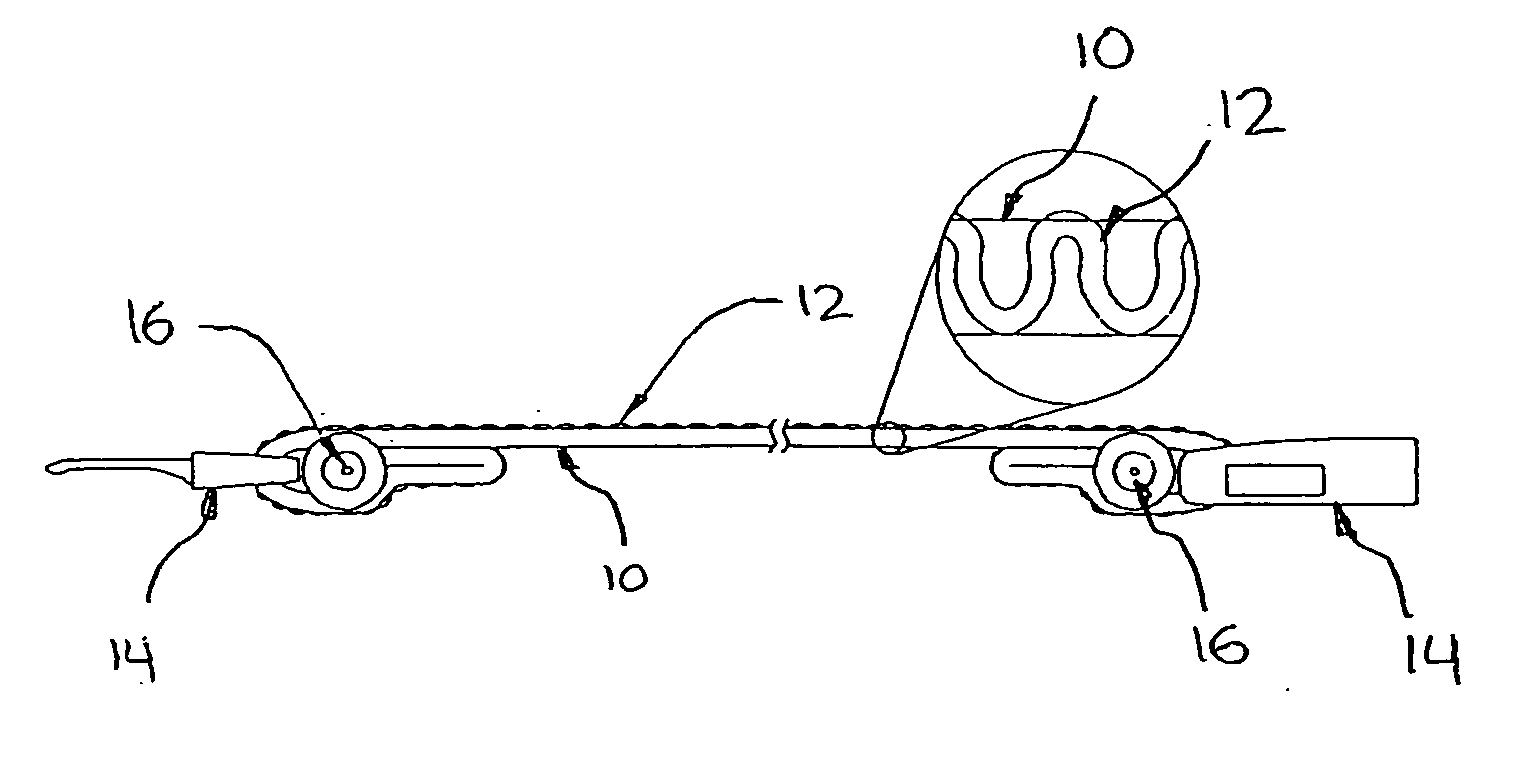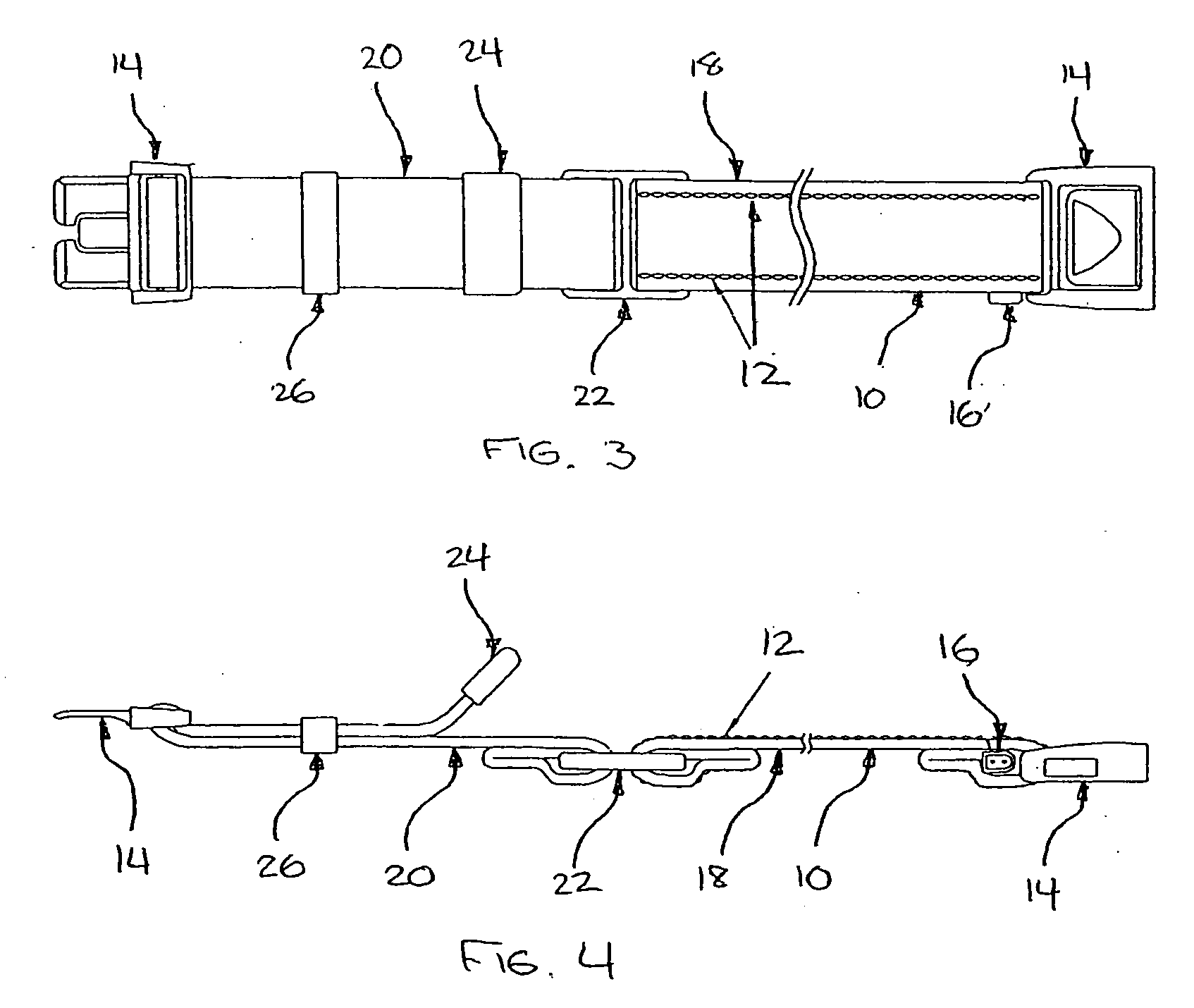Reusable inductive transducer for measuring respiration
a plethysmograph and inductive sensor technology, applied in the field of transducers, can solve the problems of small sensor element, low electrical performance, and limited application range of non-invasive inductive sensors for respiration, so as to improve flexibility, ease of use, and reduce overall cost.
- Summary
- Abstract
- Description
- Claims
- Application Information
AI Technical Summary
Benefits of technology
Problems solved by technology
Method used
Image
Examples
Embodiment Construction
[0027] For a complete understanding of the features and operation of the present invention, reference is now made to the drawings of the invention along with the accompanying figures in which corresponding numerals in the different figures refer to corresponding parts of the invention. The present invention is generally a reusable transducer having a woven elastic substrate with at least one extremely flexible conductor woven concurrently with the elastic in a plane substantially perpendicular to the surface of a patient's torso. The transducer can be formed in various different embodiments using different numbers and orientation of conductors connected in different ways to the inductance measuring circuitry.
[0028]FIG. 1 shows a single conductor respiratory inductive plethysmography (RIP) transducer of the present invention. The transducer is a belt having a woven fabric in the form of an elastic substrate 10 and a single conductor 12 that is woven into the elastic substrate 10 and...
PUM
 Login to View More
Login to View More Abstract
Description
Claims
Application Information
 Login to View More
Login to View More - R&D
- Intellectual Property
- Life Sciences
- Materials
- Tech Scout
- Unparalleled Data Quality
- Higher Quality Content
- 60% Fewer Hallucinations
Browse by: Latest US Patents, China's latest patents, Technical Efficacy Thesaurus, Application Domain, Technology Topic, Popular Technical Reports.
© 2025 PatSnap. All rights reserved.Legal|Privacy policy|Modern Slavery Act Transparency Statement|Sitemap|About US| Contact US: help@patsnap.com



